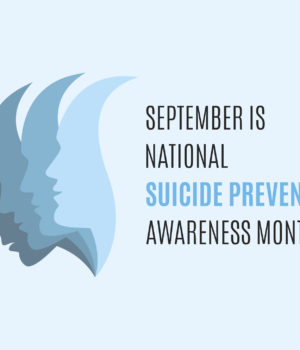
Written by Joyelle Ronan
If you or someone you know is having suicidal thoughts, please contact the 24/7 National Suicide Prevention Lifeline at 1-800-273-TALK(8255) or the Blue Ridge Behavioral Healthcare 24 Hour Crisis Services at (540) 981-9351. You can also text NAMI to 741-741 to be connected to the Crisis Text Line. You can visit NAMI.org, SAVE.org, and https://suicidepreventionlifeline.org for more information. Remember, you are not alone.
A semi-colon is used to connect two independent clauses. Instead of ending a sentence, a writer uses a semicolon to continue it. This symbol has become part of a movement that encourages those dealing with mental illness, suicidal thoughts, addiction and self-injury to continue their stories. Since it was founded in 2013, the nonprofit organization Project Semicolon has inspired thousands of people to get semicolon tattoos to raise awareness of mental illness and suicide prevention.
Amy Bleuel founded the project to honor her father, who died by suicide when she was 18. Throughout her life, Bleuel faced many battles and struggled with her own mental health. She took her own life in 2017 but her movement and impact on mental health awareness will forever live on.
The conversation of suicide prevention can be a difficult one to start. It’s sad. It’s uncomfortable. It’s serious. But, it’s necessary. Amy Bleuel helped to start this conversation; it’s time to continue it.
September is National Suicide Prevention Month. Organizations such as The National Alliance on Mental Illness, Suicide Awareness Voices of Education and the National Suicide Prevention Lifeline have been dedicating even more time and effort this month to get their message heard — suicide is 100% preventable.
NAMI has been encouraging people to share their stories on social media using #SuicidePrevention or #StigmaFree. Their website (Nami.org) is filled with personal stories to remind everyone that they are not alone, and their blog features content focusing on preventing and preparing for a crisis. The National Suicide Prevention Lifeline is encouraging use of #BeThe1To on social media. The hashtag encourages people to reach out to those who may be struggling by being the one to follow-up, ask, keep them safe, be there and help them connect.
According to SAVE, some warning signs to look for are talking about wanting to die or to kill themselves; talking about feeling hopeless or having no purpose; talking about feeling trapped or being in unbearable pain; talking about being a burden to others; increasing the use of alcohol or drugs; acting anxious, agitated, or reckless; sleeping too little or too much; withdrawing or feeling isolated; and displaying extreme mood swings.
According the article “Suicide Mortality and Coronavirus Disease 2019—A Perfect Storm?,” the already rising suicide rates in the U.S. are likely to see an increase due to COVID-19. Factors such as economic stress, social isolation and national anxiety are all risk factors caused or increased by the pandemic. Other risk factors include physical or chronic illnesses, previous suicide attempt, and family history of suicide. Certain communities such as LGBTQ+, American Indians and Alaska Natives have higher risk factors as well.
The CDC reports that over 44,965 Americans die by suicide each year.
Look out for the signs and have those difficult conversations. Suicide prevention is important all year long, but September is a month to really focus on your own and others’ mental health. Don’t become or let someone become a statistic—seek help and information. In the words of the Project Semicolon, “Your Story Isn’t Over.”



